5+ SAMPLE Contract Farming Agreement
-
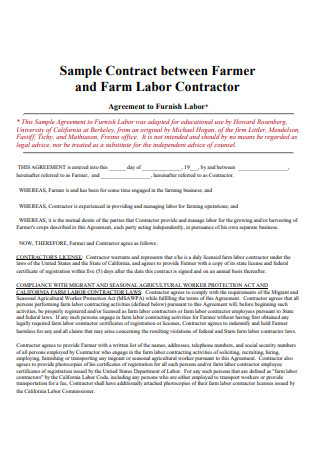
Contract Farming Labor Contractor Agreement
download now -
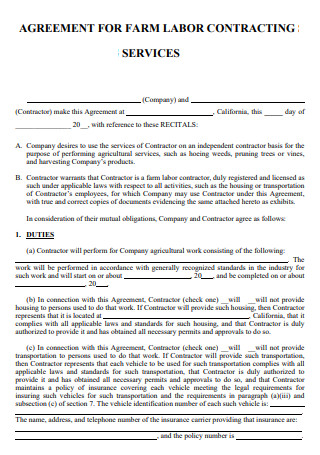
Contract Farming Labor Services Agreement
download now -
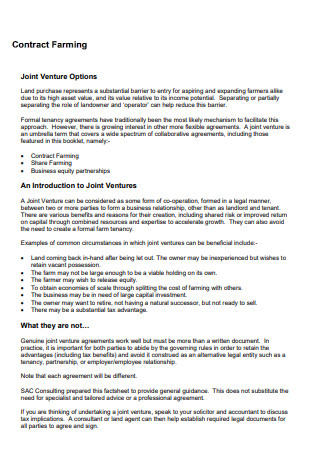
Contract Farming Agreement
download now -
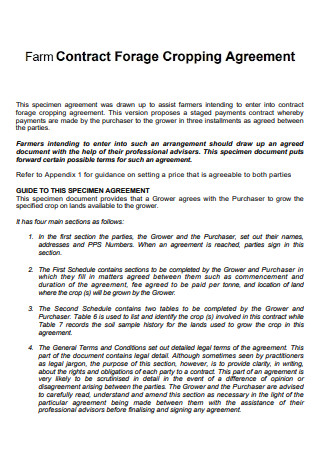
Contract Farming Forage Cropping Agreement
download now -
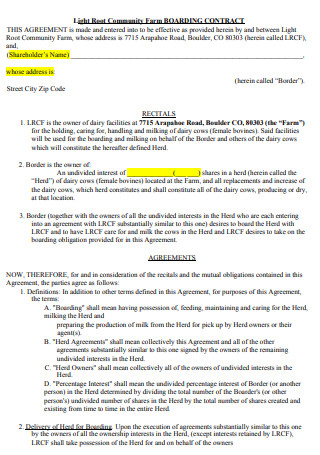
Contract Community Farming Agreement
download now -
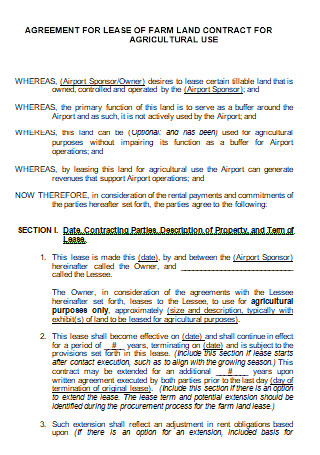
Contract Lease Farming Land Agreement
download now
FREE Contract Farming Agreement s to Download
5+ SAMPLE Contract Farming Agreement
What Is a Contract Farming Agreement?
What’s Inside a Contract Farming Agreement?
Steps in Writing a Contract Farming Agreement
FAQs
What is the centralized model of contract farming?
How does a contract farming agreement benefit the farmer?
What is a type of farming?
What Is a Contract Farming Agreement?
Before we define the agreement document, first of all, what is contract farming? Well, if the core definition of farming involves growing crops and keeping animals for food and raw materials personally to have something to eat every day, contract farming involves agricultural output that is carried out in accordance with an agreement between the customer and farm producers. In this approach of farming, the farmer agrees to furnish agreed-upon amounts of a crop or livestock product depending on the purchaser’s quality criteria and delivery requirements. In exchange, the buyer, who is generally a large company, agrees to purchase the goods at a certain price. Furthermore, this farming approach may be employed for a variety of agricultural goods, albeit it is less prevalent in poor nations for basic crops like rice and corn.
As stated, for contract farming to be carried out effectively between two parties while minimizing any chance of trouble, a document such as a contract farming agreement needs to be in place. It is a legal document that details a series of provisions in which the landowner or tenant (known as the farmer) provides land, buildings, and other technical devices while another farmer (known as the contractor) provides labor and machinery in exchange for an assured fixed annual payment per hectare and a bonus from net earnings. For tax reasons, both parties retain their own business identities and trading positions under this type of agreement. The agreement specifies the farmer’s and contractor’s responsibilities, as well as how any money and expenses would be split. This has the advantage of generating a bigger and more consistent revenue for both parties.
What’s Inside a Contract Farming Agreement?
Since this type of agreement needs to be present in order to practice contract farming effectively and trouble-free, it needs to be effective. And for this document to be effective, it needs to have the following key elements in place:
Steps in Writing a Contract Farming Agreement
Here are the important steps to be followed in order to create a contract farming agreement:
1. Identify Who is Involved
The first step that needs to be carried out when writing a contract farming agreement (or any type of agreement) is to identify who are the parties involved along with a brief description of their roles. In the case of the contract farming agreement, the parties involved are the farmer and the contractor. In brief terms, the role of the farmer in this agreement is to provide land, buildings, and equipment to the contractor that are necessary to carry out the agreement while the role of the contractor is to provide the necessary labor and machinery for the agreement to commence and to carry out every responsibility stated in the agreement in a professional manner.
2. Write the Key Clauses
After identifying who is involved in the agreement alongside their roles, it’s time to write down the key clauses that make up the main body of the agreement in this step. Some of the key clauses that make up the contract farming agreement include farming services, farming business, and the farming policy. The farming services clause should state that the contractor needs to carry out the services in accordance and subject to the terms and conditions of the agreement. The farming business clause states that the farming business shall be the business of the party identified as the “farmer” in this agreement and the party shall be the registered producer of the goods for tax purposes. The farming policy clause dictates the farming policies to be observed throughout the duration of the agreement.
3. Write the Secondary Clauses
After writing down the key clauses of the contract farming agreement, it’s time to write down the secondary (or the boilerplate) clauses that make up the agreement. Some of the secondary clauses of the agreement include the arbitration clause, the notices clause, and the governing law clause. The arbitration clause of this agreement states that in any event of disagreement that affects the construction of the agreement, an arbiter needs to be appointed, and his/her decision regarding the dispute shall be final. The notices clause states that any notices to be handed out by either party need to be given at the stated addresses and shall be done so at an appropriate date in order to be considered as properly given. The governing law clause states the place whose laws the agreement should observe.
4. Verify and Finalize
After writing down the main and secondary clauses of the agreement, it’s time to give it a second look. This also serves as the last step in creating this agreement. When verifying, check if there are any inconsistencies present throughout the main and secondary clauses, check if there are any typographical or grammatical errors that may alter the outlook of the document, and check if there are any missing elements that need to be included. When everything’s done, the agreement may now be set in motion by signing it.
FAQs
What is the centralized model of contract farming?
In the centralized contract farming model, buyer engagement can range from limited input provision to management of the majority of production activities, such as land preparation and harvesting. This contract farming approach is commonly utilized for tree crops, annual crops, poultry, and dairy. The centralized model of contract farming gets its name from a centralized processor and/or packer purchasing from a multitude of small farmers.
How does a contract farming agreement benefit the farmer?
One advantage of this arrangement for the farmer is that he or she retains ownership of the land and may thus enjoy living there and the advantages of the agricultural lifestyle. Furthermore, the contract should yield a larger and more consistent revenue than in-hand farming because the farmer benefits from the contractor’s cheaper labor and machinery expenses, as well as their knowledge and skills. The agreement should also provide incentives for the contractor to be as efficient as necessary.
What is a type of farming?
Arable farming, which entails producing crops only in warm climates, is an instance of a type of farming practiced globally. It is done on moderately sloping or flat ground with rich, productive soil. In arable farming, it is critical that the ground not be excessively wet or too dry. Crop-growing land should be relatively protected and appropriate for the use of machines.
Contract farming establishes the conditions necessary for the production and marketing of a farm product, and it is understandable that the process can get so complex sometimes. In order for things to get streamlined between the parties involved as well as their interests to get protected, a contract farming agreement needs to be in place. In this article, plenty of sample templates are available should you require further understanding of this topic.
